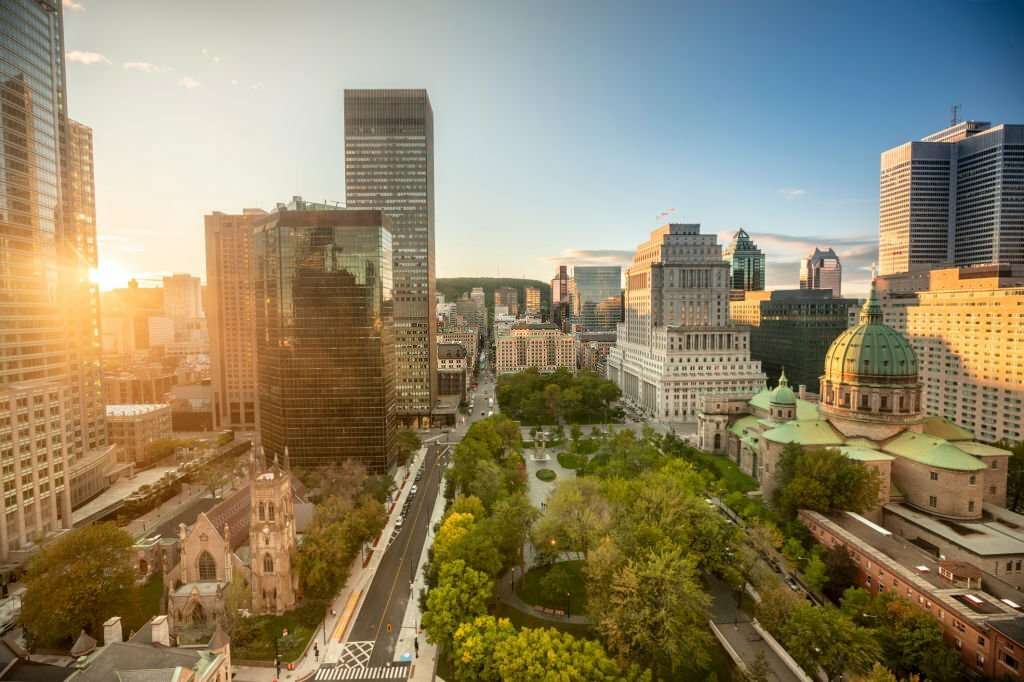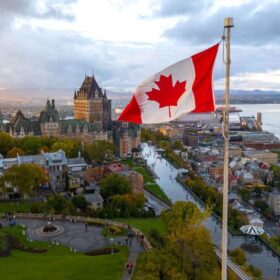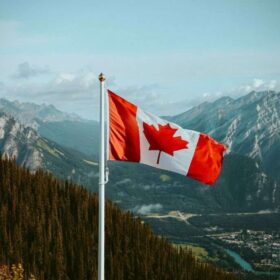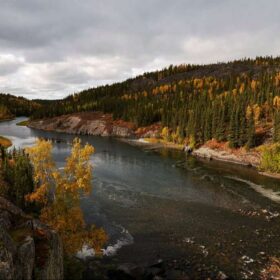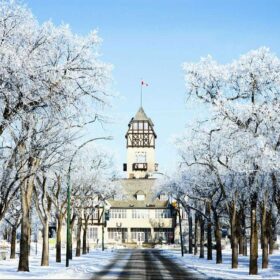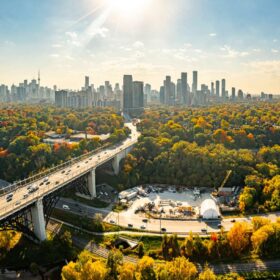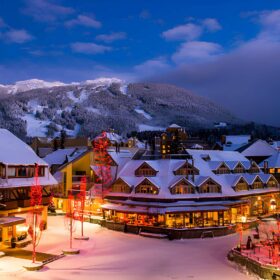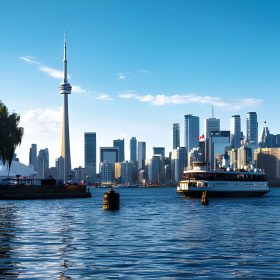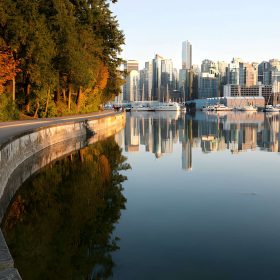Montreal, the cultural and economic capital of Quebec, is a cosmopolitan city with a multifaceted character. Being the largest francophone city in the Americas, it is often referred to as the ‘Paris of Canada’ due to its charming cobblestone streets, remarkable historic architecture, and vibrant, innovative culinary scene.
While Montreal boasts a rich history and heritage to explore, you’ll also discover modern buildings and museums scattered throughout the city center. Beautiful green parks, gardens, a wide array of tourist attractions, art galleries, and concert halls are interspersed throughout the city. With an abundance of activities and a continuous stream of festivals and cultural events year-round, Montreal is undoubtedly one of the top tourist attractions in Canada.
1. Old Montreal
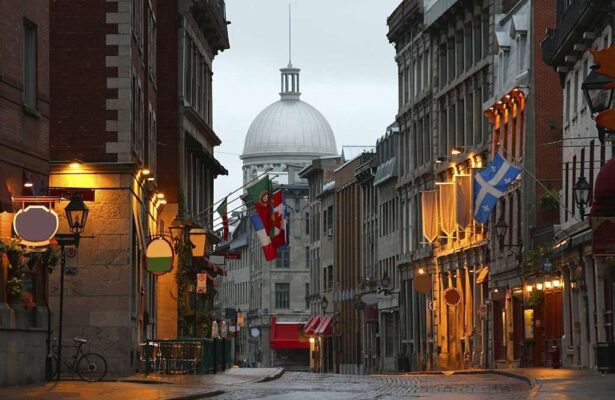
Old Montreal is the epicenter of tourism in Montreal. This area boasts an extraordinary concentration of buildings that date back to the 17th, 18th, and 19th centuries, exuding the charming ambiance of a Parisian-style quarter. Many of these historic edifices have been repurposed as hotels, restaurants, galleries, and souvenir shops. If you’re seeking an ideal base for a few days of sightseeing in the city, this is the perfect place to stay.
The numerous historic sites, streets, and landmarks in Old Montreal are easily explored on foot. Among the myriad activities here, the must-see attractions include a visit to the Notre-Dame Basilica, a leisurely stroll down Rue Saint-Paul, an exploration of Bon Secours Market, and the enjoyment of the open-air community space at Place Jacques-Cartier. For those seeking urban adventures, the waterfront offers the towering Ferris wheel (La Grande Roue de Montréal) and the Tyrolienne MTL zipline.
As the evening descends, Old Montreal springs to life with street-side patios and restaurants. During the summer, you can relish al fresco dining, either on the sidewalk or on rooftop terraces.
2. Mount Royal Park
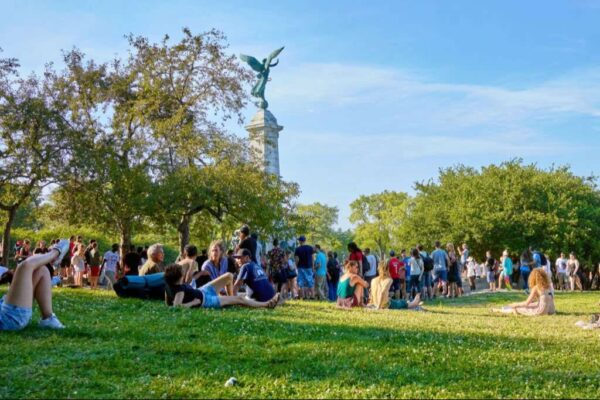
Situated adjacent to Saint Joseph’s Oratory is the beautiful Mount Royal Park, which looms over Downtown Montreal and is the source of the city’s name. As one of the largest green spaces in the city, it offers a splendid natural environment and picturesque viewpoints for visitors to enjoy activities like walking, running, and cycling.
Designated as a park in 1876, the prominent hill and its expansive forests and scenic pathways were designed by Frederick Law Olmsted, the same landscape architect behind New York City’s Central Park. In addition to its scenic and peaceful trails, the park features picnic areas, playgrounds, and two excellent belvederes. Beaver Lake, perched at a summit 232 meters high, also provides breathtaking views for visitors to savor.
3. Montreal Botanical Garden
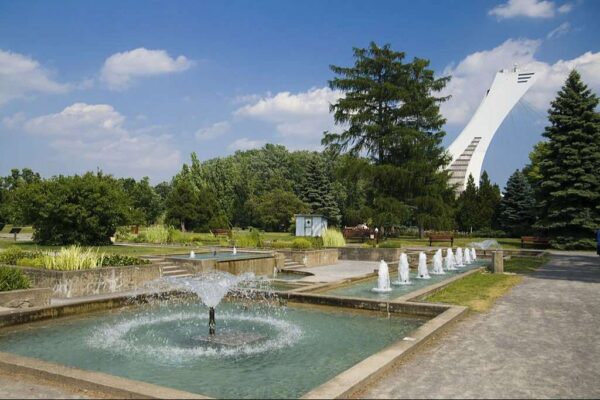
The Montreal Botanical Garden, located a twenty-minute drive north of the city center, is home to an extensive collection of flowers, shrubs, and trees. It is among the largest and most significant botanical gardens globally, featuring picturesque pathways, breathtaking scenery, and abundant natural beauty.
Designated as a national historic site, the garden and its expansive greenhouse complex were first opened to the public in 1931. It comprises ten greenhouses with thirty themed gardens, showcasing over 22,000 species of flora. In addition to tropical and poisonous plants, the garden includes alpine areas and rainforest sections to explore, with its enchanting Chinese garden being just one of the many highlights.
4. Saint Joseph’s Oratory
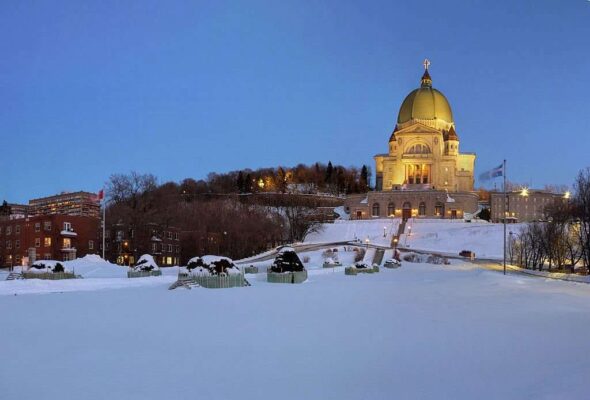
The grand Saint Joseph’s Oratory, the highest point in Montreal, featuring its massive copper dome, is visible from all corners of the city. As the largest church in the country, it stands at an impressive height of 129 meters, and its enormous facade showcases exquisite Renaissance Revival-style architecture.
Dedicated to Saint Joseph, the patron saint of Canada, this beautiful basilica was completed in 1967 after decades of construction and now draws millions of visitors and pilgrims each year. Many believe in the healing powers of its shrines and tombs, as evidenced by the crutches and canes left in the Votive Chapel. The oratory is also a must-visit for its elegant Art Deco interior adorned with magnificent murals and stained-glass windows.
5. Jean-Talon Market
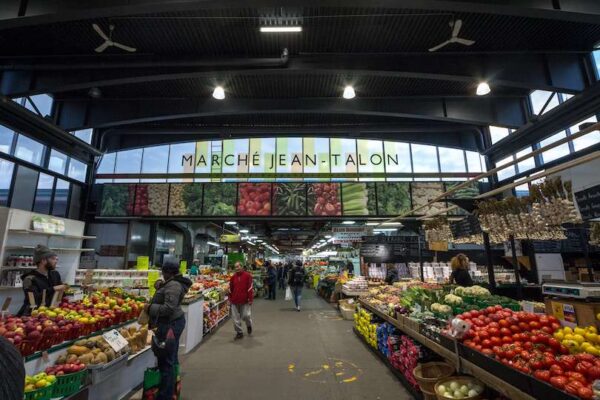
One of the largest outdoor markets in North America, the vibrant and bustling Jean-Talon Market is located in the lively Little Italy neighborhood of the city. It is immensely popular among both locals and tourists, offering an array of over three hundred stalls filled with fresh produce and local specialties.
Originally established in 1933, the market has expanded to cover a vast area, with numerous stands, cafes, and small eateries adorning its arcades and central pavilion. Since many of the vendors come from the nearby countryside, visitors can enjoy a wide selection of fresh fruits and vegetables, as well as baked goods, cheeses, and meats. In addition to savoring delicious treats or taking a coffee break, the market is also an excellent place to shop for souvenirs.
6. Notre-Dame Basilica
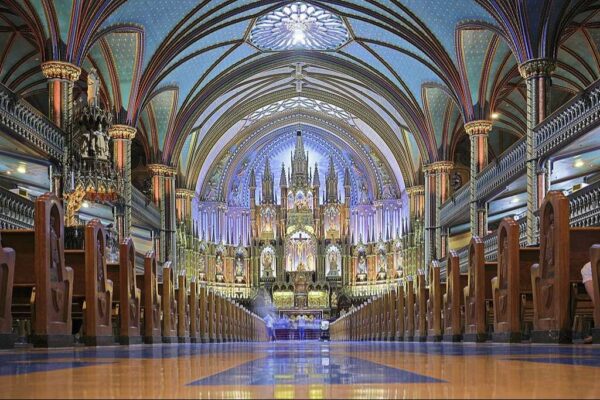
Located in the heart of historic Old Montreal, you’ll find the magnificent Notre-Dame Basilica, one of the city’s most iconic and renowned landmarks. This Gothic Revival masterpiece, constructed in 1829, features two striking twin bell towers and an elegant façade overlooking Place d’Armes.
As one of the most frequented monuments in North America, this breathtaking basilica welcomes millions of visitors annually. Beyond its awe-inspiring architecture, people are drawn to witness its lavishly adorned interior adorned with intricate wooden carvings, gilded sculptures, and stained-glass windows. Such was the impact of the basilica’s beauty that even its Anglican architect, James O’Donnell, converted to Roman Catholicism; his final resting place is in the basilica’s atmospheric crypt.
7. Barbie Expo

Situated right in the heart of the city, the Barbie Expo hosts the world’s most extensive collection of Barbie dolls. This expansive exhibition showcases a collection of over a thousand captivating Barbie dolls, each adorned in a wide array of stylish and celebrity-themed outfits.
Since its opening in 2016, the museum has become a beloved attraction for visitors to Montreal. The Barbie dolls on display feature outfits representing renowned brands and bridal wear, as well as fashions from countries as distant as Brazil, Jamaica, and Japan. The expo also offers a journey through the history and evolution of this beloved doll, complete with miniature versions of celebrities like Beyoncé, Marilyn Monroe, and Mary Poppins.
8. Musee des beaux-arts de Montreal
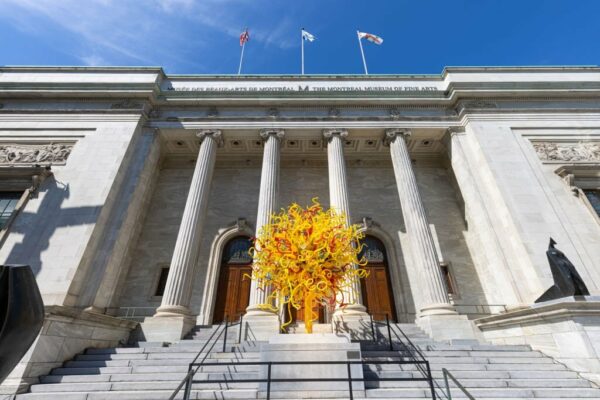
Not far from the Barbie Expo, you’ll find another of the city’s major attractions, the Montreal Museum of Fine Arts. As the largest art museum in Canada, it proudly presents an extensive collection of paintings, photographs, and sculptures, featuring over 45,000 artworks showcased across its five pavilions.
This institution, one of the nation’s oldest and most prestigious, was established in 1860 with the goal of fostering an interest in and appreciation for the fine arts. Over the years, its collection has substantially expanded to include masterpieces by renowned artists such as Rembrandt, Renoir, and Picasso, among others.
In addition to its impressive collection of works by international artists, the museum’s beautiful Beaux-Arts building also houses significant Quebec and Canadian artworks. With a diverse range of items on display, including furniture, textiles, glassworks, and ceramics, the Montreal Museum of Fine Arts is unquestionably a must-visit destination.
9. Mary Queen of the World Cathedral
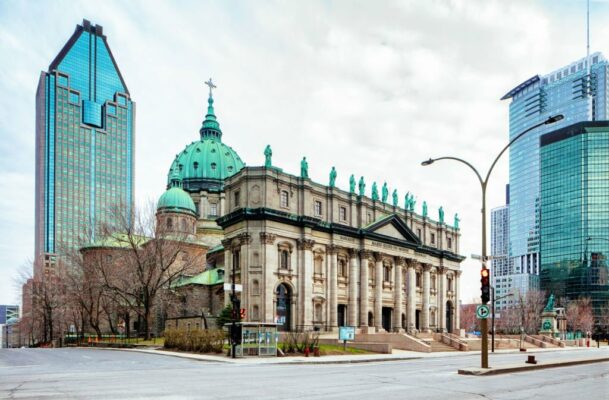
A brief walk from the Bell Centre will take you to the magnificent Mary, Queen of the World Cathedral, known for its incredible architecture and artworks. This stunning structure, one of the most beautiful in the city, features an elaborate design inspired by Saint Peter’s Basilica in the Vatican.
Constructed in 1894, the cathedral’s Renaissance-style facade is adorned with thirteen towering statues of Montreal’s patron saints, set against the backdrop of a colossal green copper dome. The interior is equally captivating, with elegant aisles, arches, and apse adorned with exquisite paintings and religious artworks. Though smaller in scale compared to the world-famous Vatican Basilica, the cathedral remains a striking and visually impressive monument, earning its designation as a National Historic Site in 2000.
10. Bell Centre

If you are seeking an exhilarating and distinctly Canadian experience, attending an ice hockey game at the Bell Centre is an unbeatable choice. This colossal arena, the largest of its kind in the world, serves as the venue where the Montreal Canadiens compete in their fast-paced and frenetic matches, thrilling thousands of fans.
Since its opening in 1996, this massive, versatile arena has been conveniently located in the heart of the city, in close proximity to many of its primary attractions. While renowned for hosting action-packed National Hockey League games, the Bell Centre also showcases various other sports and entertainment events. As a result, it stands as the premier destination for experiencing concerts, basketball games, or hockey matches.
11. Pointe-a-Calliere Museum
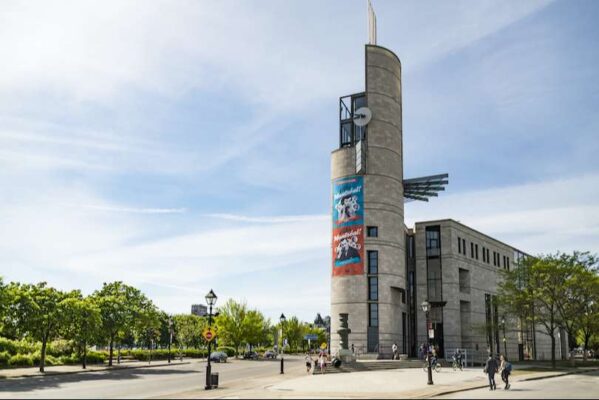
A definite must-visit for history enthusiasts, the remarkable Pointe-à-Callière Museum unfolds the captivating tale of Montreal’s establishment and its evolution over the centuries. In addition to housing an extensive collection of artifacts and exhibitions, this modern museum complex is constructed atop an archaeological site that once served as the city’s inaugural settlement.
Since its inauguration in 1992, this museum dedicated to archaeology and history has garnered numerous accolades for its well-curated displays and interactive activities. Beyond delving into the foundations of the city’s earliest structures, visitors can immerse themselves in the history of the region’s Indigenous peoples and the formative years when Montreal was a budding colony. Alongside its educational and engaging multimedia presentations, the museum regularly hosts cultural events and temporary exhibitions.
12. Biodome de Montreal
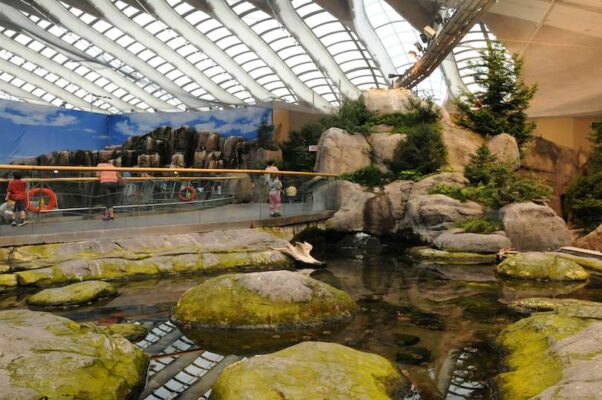
Located just a short drive north of downtown, the Biodome de Montreal is part of the largest natural science museum complex in Canada. Originally constructed for the 1976 Olympics, this futuristic velodrome has since been transformed to showcase five distinct ecosystems from the Americas.
Following renovations and its reopening as a biodome in 1992, visitors can meander along its winding paths, passing through lush rainforests, North American wilderness, and even habitats representing the Arctic, Antarctic, and estuary environments.
In addition to an abundance of flowers, plants, and trees, the biodome is home to animals and birds that are native to these ecosystems. Beyond observing penguins and macaws, you can delve into a deeper understanding of these diverse habitats through its immersive exhibits and displays.
13. Montreal Science Centre
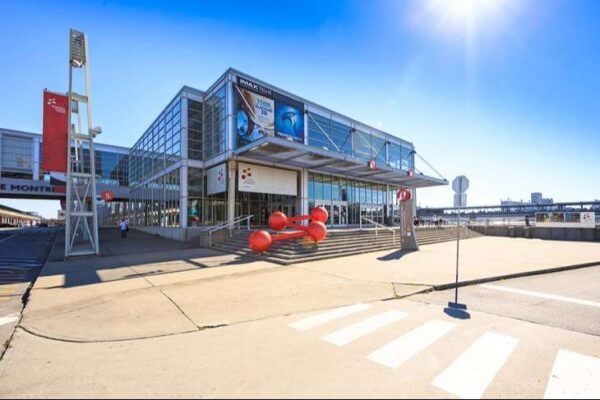
Situated conveniently in the heart of the Old Port (Vieux Port) area, you’ll find the Montreal Science Centre. This interactive and innovative venue is an ideal family outing in Montreal, whether you are seeking shelter from a rainy or cool summer day or escaping the winter’s snow and cold.
Among the center’s many attractions, you won’t want to miss the Fabrik exhibit, where children can unleash their creativity by crafting various items in an assembly line style using the provided materials. Another exciting experience awaits at the Clic! exhibit, where you can create nearly anything you can imagine using unique building blocks that snap together in unconventional ways.
14. Chinatown
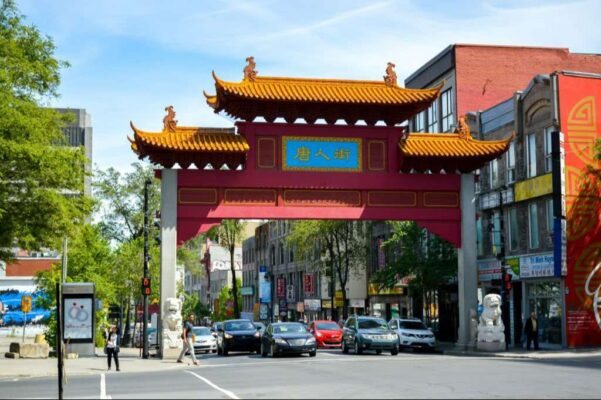
Located around Rue de la Gauchetière, Montréal’s Chinatown is marked by Chinese gates that symbolize its central area. This vibrant district traces its origins back to the late 1860s when Chinese laborers, initially drawn to the region for mining and railroad construction, began migrating to urban areas in pursuit of improved living conditions. Present-day Chinatown features a diverse array of Asian restaurants and shops, no longer limited to Chinese offerings. It has evolved into a destination where both locals and tourists can savor a variety of culinary delights.
15. Place des Arts
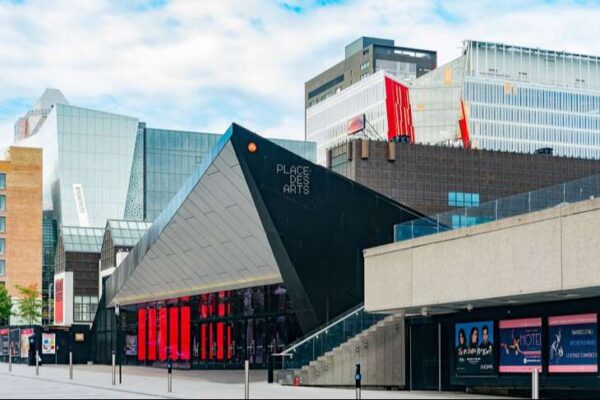
Place des Arts is a comprehensive arts complex, the largest of its kind in all of Canada, dedicated to both visual and performing arts. It houses three prominent cultural organizations: the Montreal Symphony Orchestra, Les Grands Ballets Canadiens, and the Opéra de Montréal, offering various stages and rehearsal halls for a wide range of theatrical, musical, dance, cinematic, and event performances.
These facilities surround a spacious esplanade adorned with art installations, fountains, and cascading water features, making it a popular venue for various events. Among these, the most significant is the annual Festival International de Jazz de Montréal, taking place in late June and early July, which draws attendees from around the globe and showcases some of the biggest names in the jazz world.
The Musée d’art contemporain de Montréal, a museum dedicated to contemporary art, is particularly noteworthy and should be on your list of places to visit, especially since it offers a special spotlight on emerging French-Canadian artists.
FQAs
Q: What is the best time to visit Montreal?
A: The best time to visit Montreal is during the summer months from June to August when the weather is pleasant, and numerous festivals and outdoor activities take place.
Q: Is French the only language spoken in Montreal?
A: No, while French is the official language, many residents speak English, and you can get by with English in most places.
Q: How can I get to Mount Royal?
A: You can hike to Mount Royal from the city or drive to the summit. Public transportation options are also available.
Q: Are there any free museums in Montreal?
A: Yes, some museums offer free admission on certain days, so be sure to check their schedules.
Q: What’s the most popular festival in Montreal?
A: The Montreal Jazz Festival is one of the most popular and renowned festivals in the city, attracting music enthusiasts from around the world.

